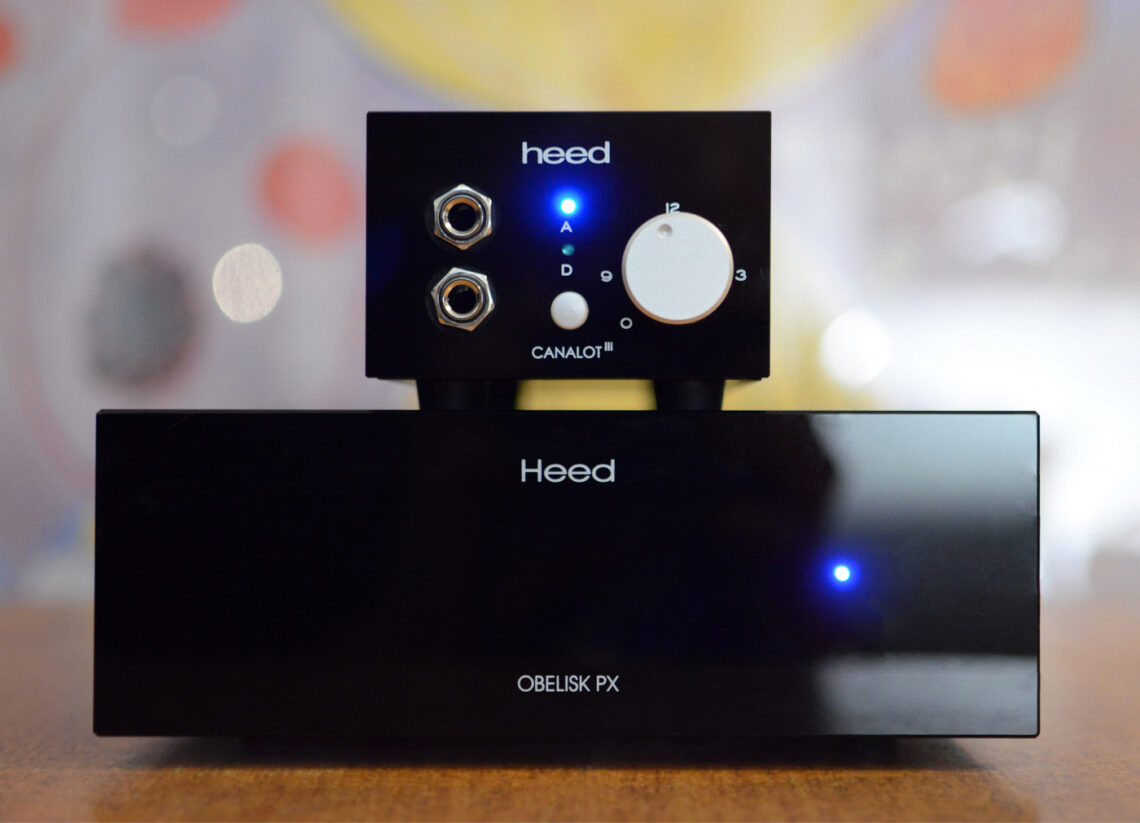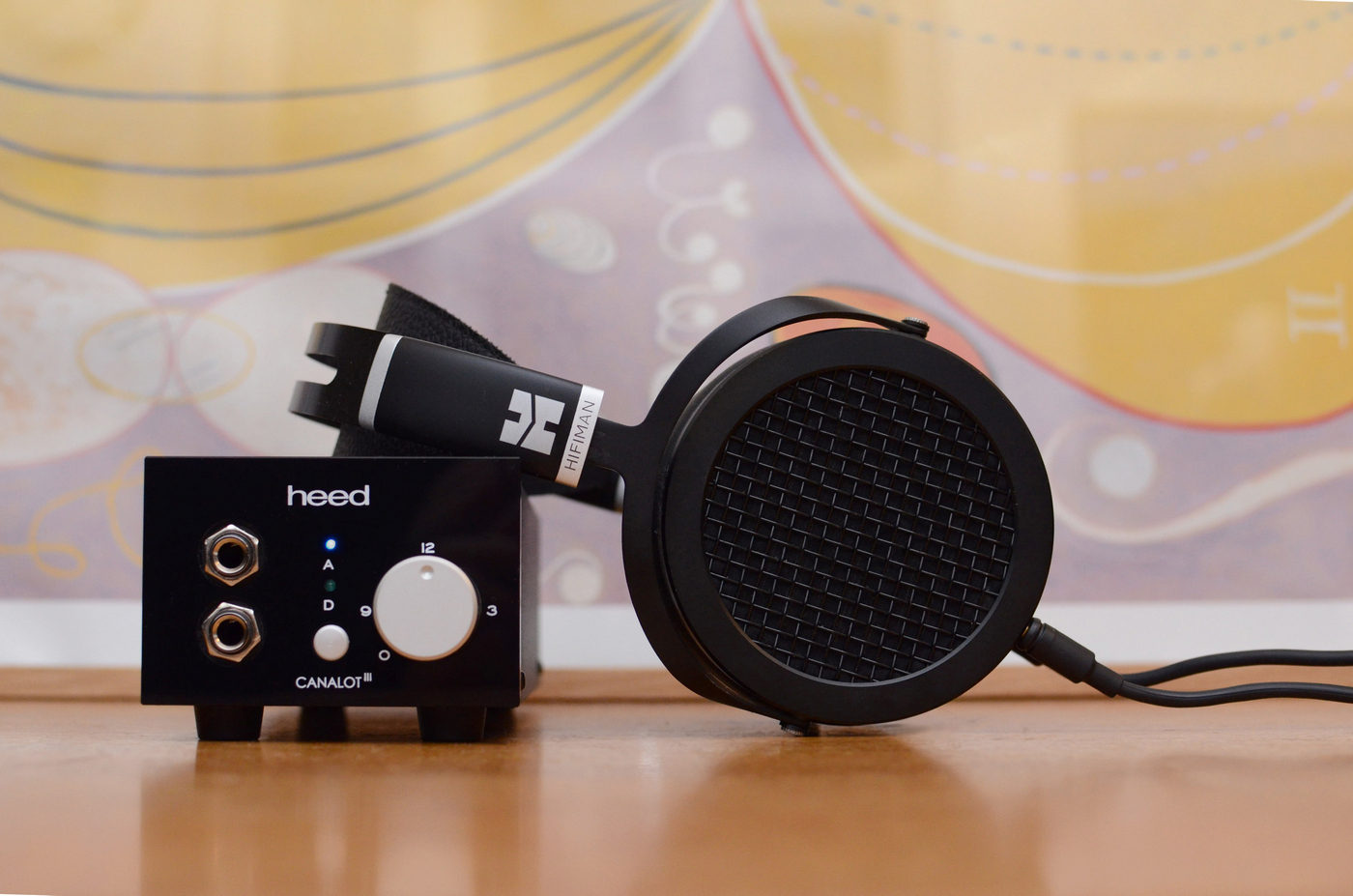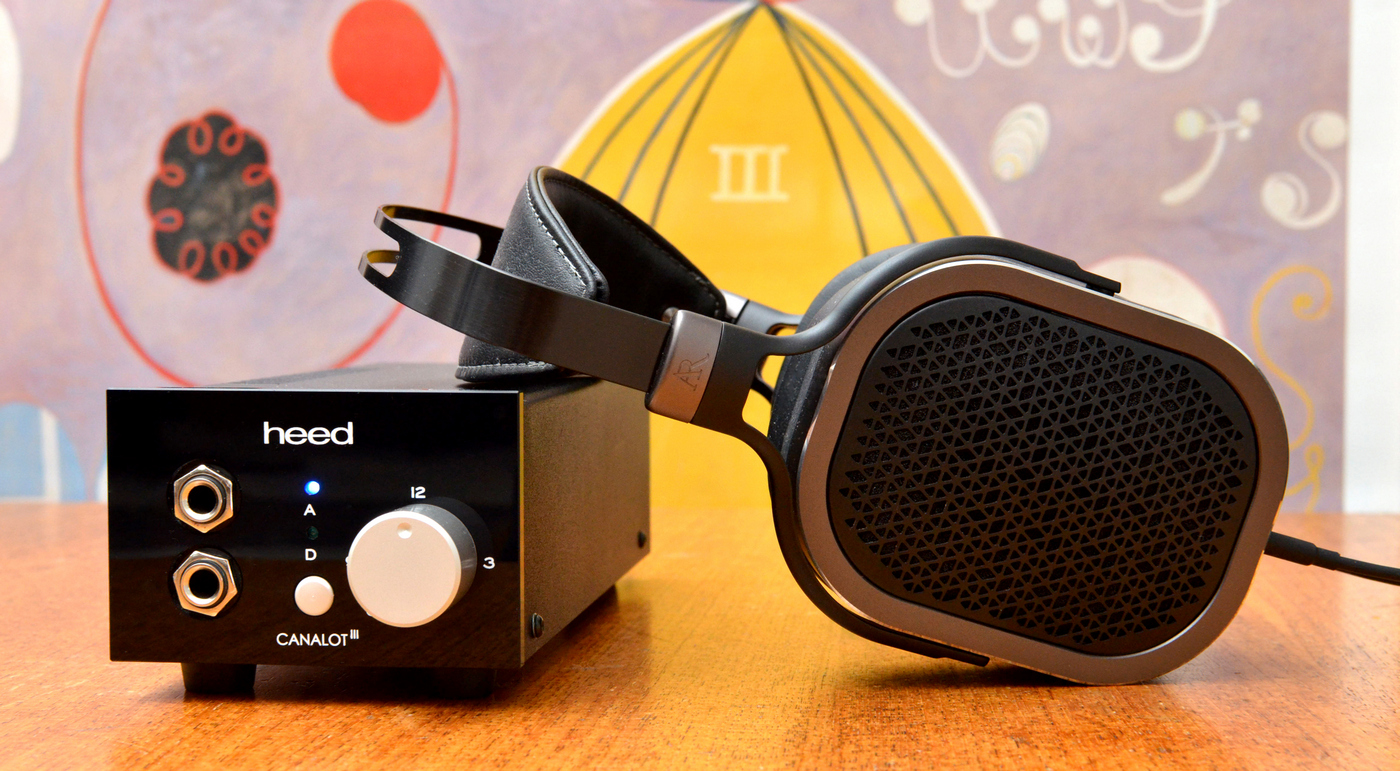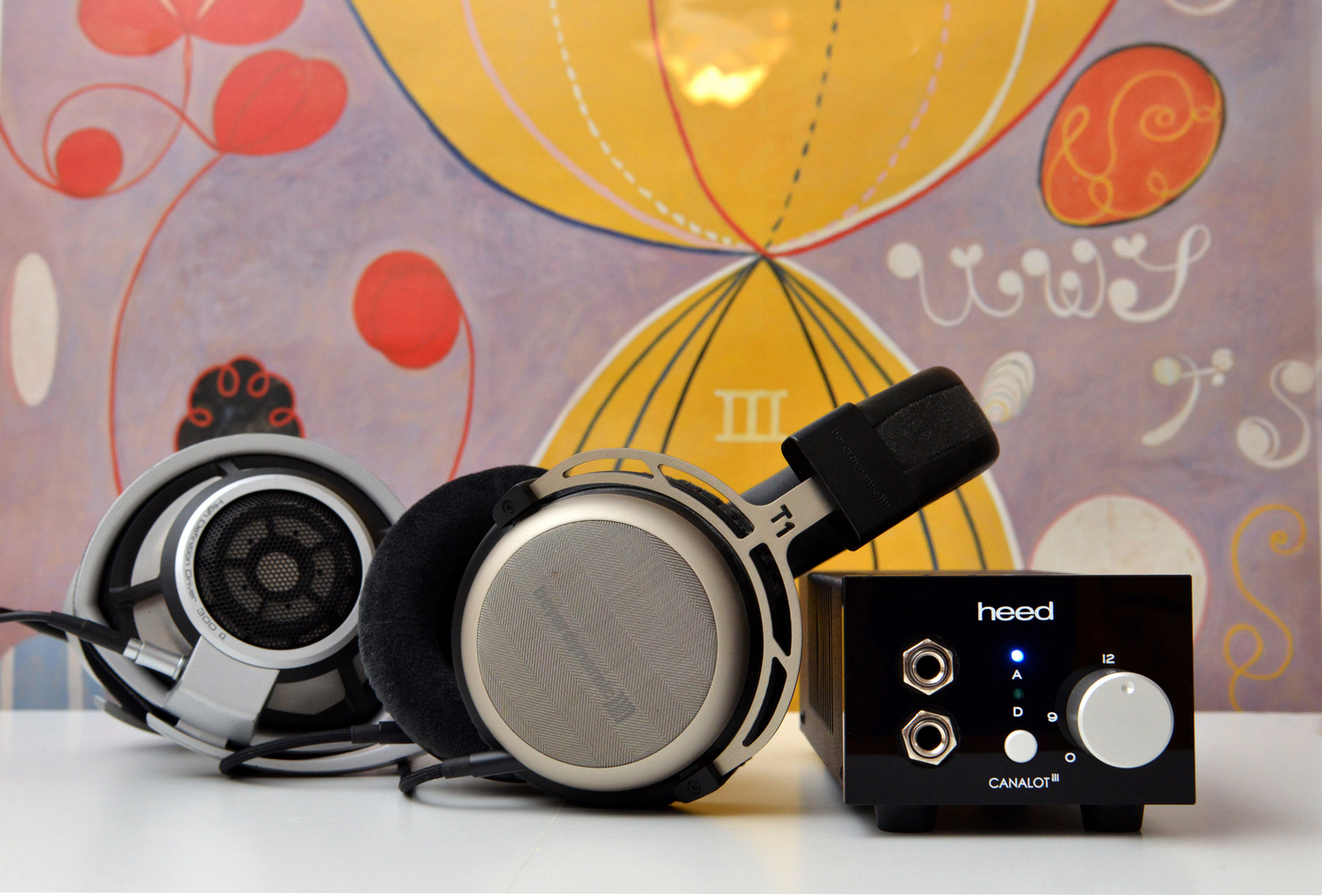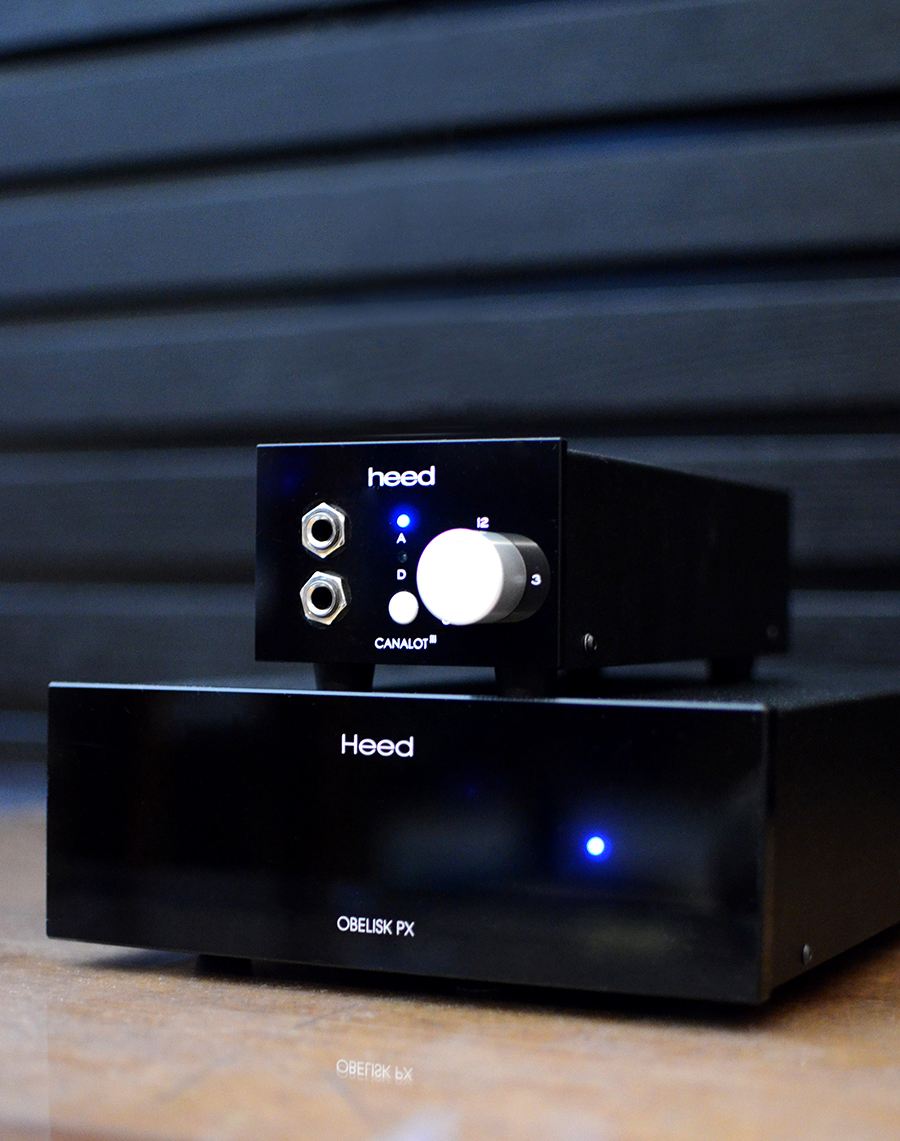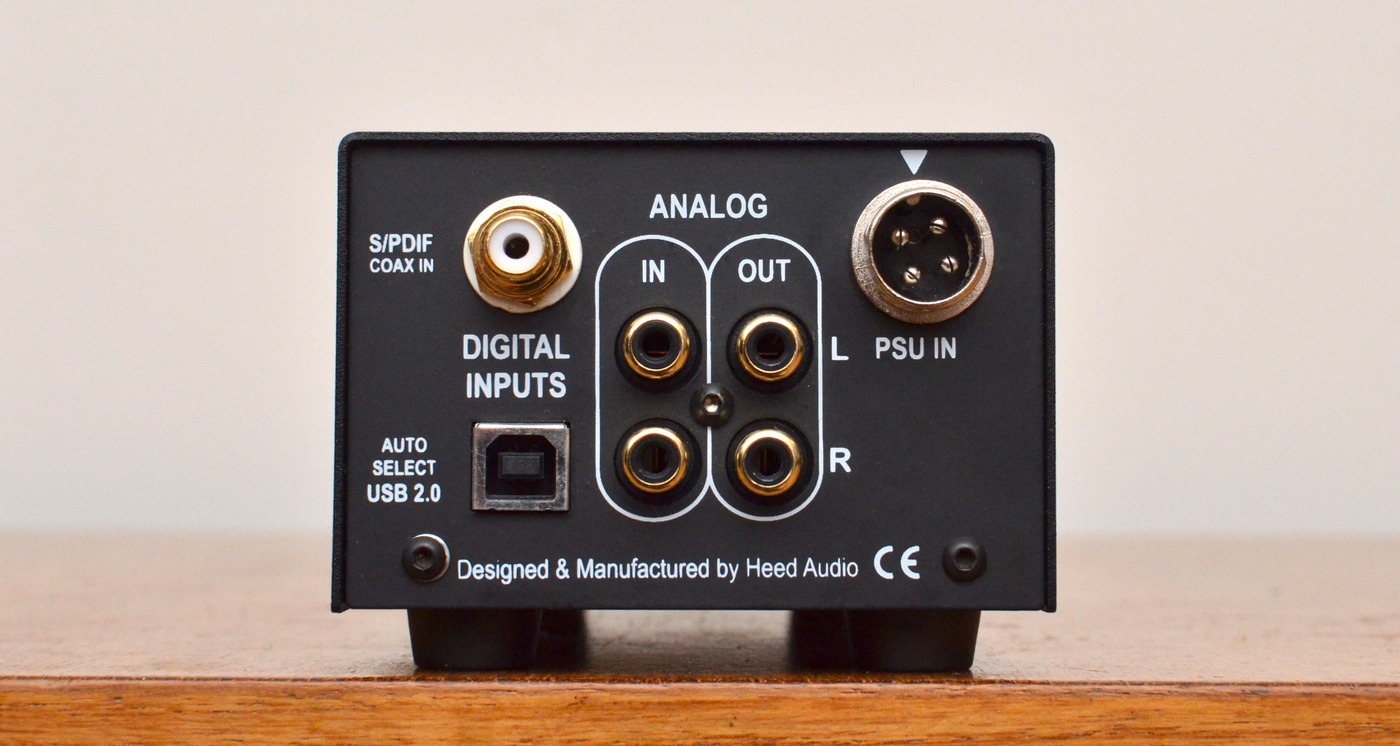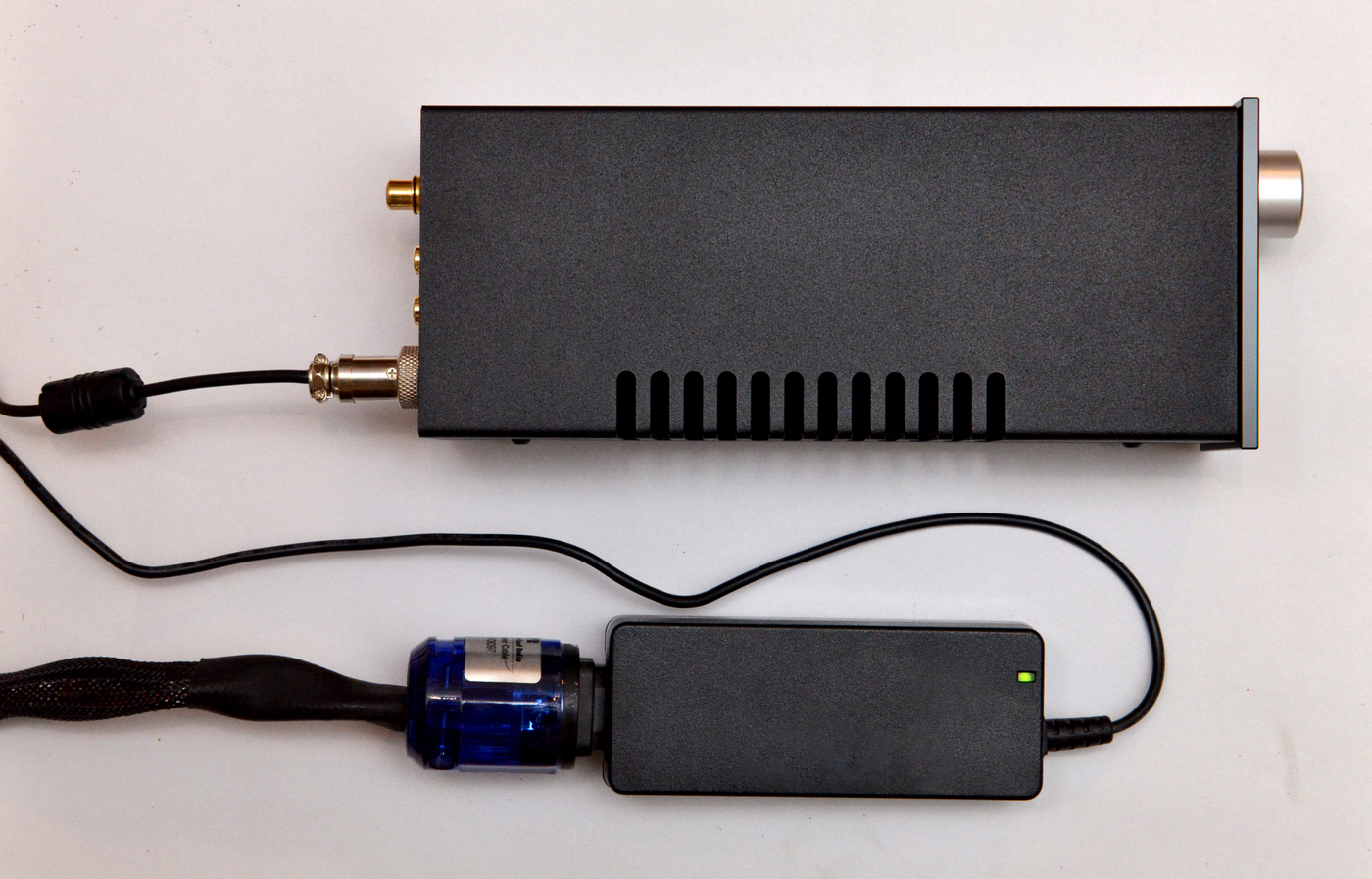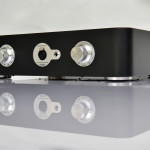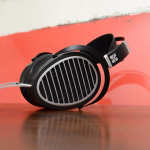The Heed Canalot III is a compact class-A headphone amplifier with the interesting option of choosing between various external power supply units. Heed offers four different power supplies that works with the Canalot: The standard X-PSU, the Q-PSU (with a matching chassis), the Obelisk PX and finally the Thesis Pi (which simultaneously can power another unit, like the Thesis Alpha preamplifier/DAC or Thesis Phi phono stage). These PSUs will affect the performance of the Heed Canalot quite a lot (pun intended).
In this review, I have used the standard X-PSU and the Obelisk PX. Although the sound signature of the Heed is similar with the two, the difference in performance with regards to dynamics and detail retrieval is not trivial. Thus, I have basically treated the Canalot/X-PSU and Canalot/Obelisk PX as two different amplifiers and compared them to suitable competing amps based on performance and price.
Functionality-wise, the Canalot III is quite simple in stock form. On the back, there are analog RCA inputs and variable RCA outputs. In the front, there is a volume control knob and two TRS headphone jack outputs. There is also a selector button, in case you insert the optional digital card, which offers SPDIF/RCA and USB inputs. My test unit was prepared for USB and SPDIF with external sockets, but had no internal digital card.
In the following, I will perform two rounds of comparisons. I start out with the most expensive power supply.
Amplifier Comparisons 1:
Heed Canalot III with the Obelisk PX Power Supply
vs Violectric V200
Source: Violectric V800 DAC
Oppo PM-1
Faces – Tomaz Stanko: The Heed really shines here. The V200 is good, but the dynamics, smoothness and warm spaciousness of the Heed combo really makes this one a delight to listen to. The Violectric is less lively and flatter sounding, although they are not miles apart.
Young Vivaldi – Concerto in D-minor RV813 Allegro Adagio – Modo Antiquo: Again, the V200 sounds good, but the Heed is more organic and lively, without having me feel that I miss anything. It is simply an open and detailed presentation with that nice dose of warmth that makes audio lovers really smile.
Midnight City – M83: The V200 is again slightly flatter sounding, the Heed a bit warmer and fuller. But the difference is not very obvious.
Audeze LCD-X
Reunion – M83: The Heed is more organic and generally even nicer than the V200.
Who says words with my mouth – Gunhild Seim: The V200 and the Heed are in a similar sonic landscape (as they always are), but the Heed feels more organic.
Building bridges – Ill Considered: This song is just an electric guitar, some percussion, and a trumpet, and sounds similarly great on the two amps. But again, the V200 is a tad drier.
Sennheiser HD650
Upstart – Ill Considered: Quite similar presentations, but I tend to prefer the Heed.
Terminal 7 – Tomasz Stanko: The Heed is more organic and more alive sounding.
Young Vivaldi – Concerto in D-minor RV813 Allegro Adagio – Modo Antiquo: Here I tend to prefer the V200 because it has this drier, more textured tone that makes the strings a tiny tad more tactile. But, another day I just might switch preferences. Both are great.
Sennheiser HD800
Young Vivaldi – Concerto in D-minor RV813 Allegro Adagio – Modo Antiquo: I always loved the V200 with the HD800, and here it is wonderful. The Heed is too – they are not really very different. The Heed sounds a tad fuller, and it certainly is purely a matter of taste which to prefer.
Terminal 7 – Tomasz Stanko: A very pleasing presentation from the V200, open, spacious, warm and enveloping. The Heed is very similar in all aspects, but a tiny tad warmer sounding.
Giver – K.Flay: Very similar.
These two amps are indeed very similar with the HD800, in all aspects, like in detail retrieval, tonality, and dynamics. The Heed is a tad warmer in the midrange, but not that much.
Hifiman Sundara
Faces- Tomasz Stanko: I prefer this with the Heed – is more alive, less dry sounding.
Four Ravens – Ill Considered: Again, the Heed is better, with more present mids and a more enveloping and upfront soundstage.
Montague Grant – Prins Thomas: The bass has more of a thump with the Heed – the midbass is more pronounced. Still, it offers great detail and soundstaging. Again, I prefer the Heed.
So in general, I tend to prefer the Heed Canalot/Obelisk PSU over the V200. The Heed combo is pricier than the V200. In detail retrieval and dynamics, they are quite equal. Neither are bright sounding amplifiers. The Heed wins on its slightly more organic character.
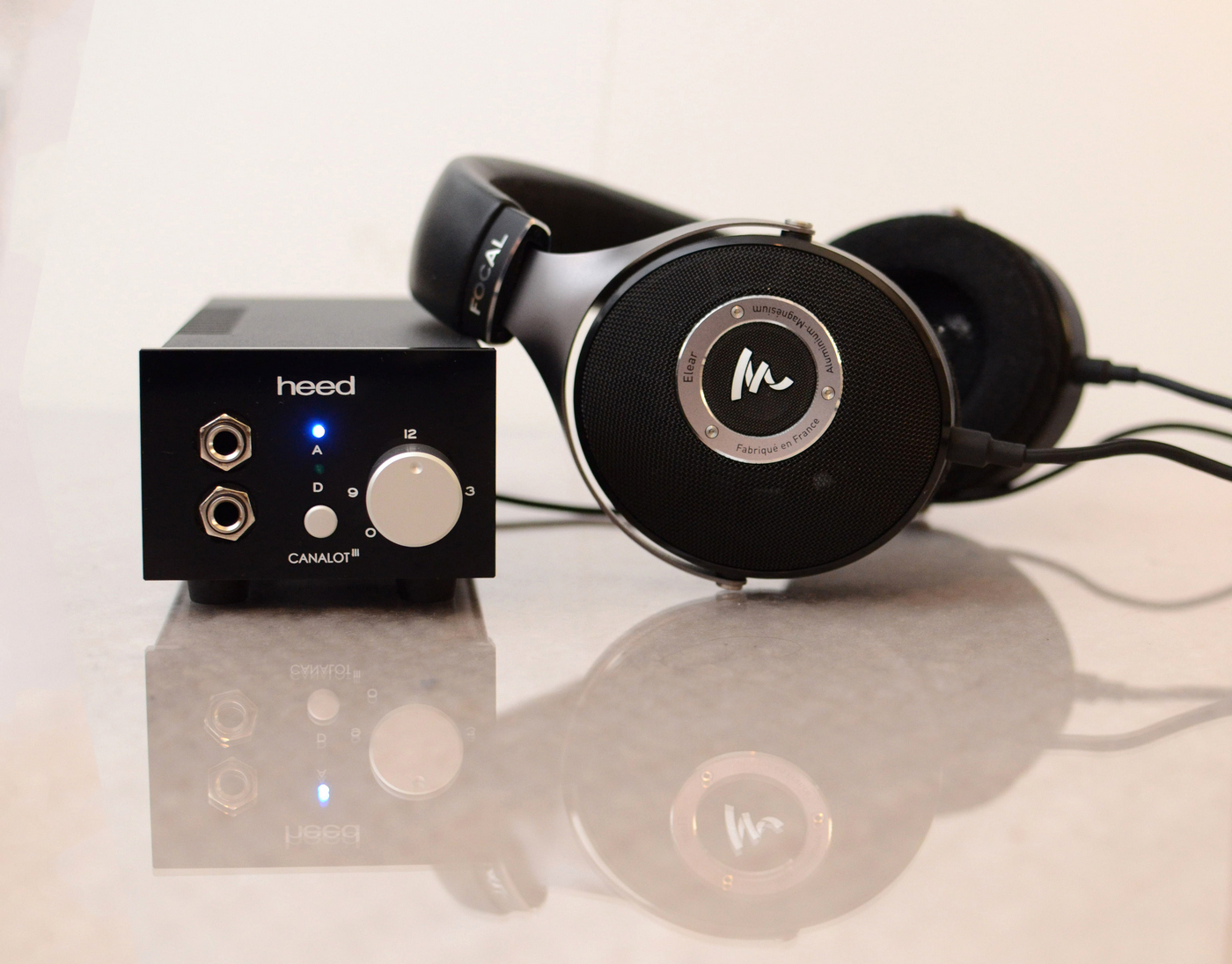
vs Auralic Taurus
Source Mytek Liberty
Audeze LCD-X (Taurus in single-ended mode)
The Search – Collocutor: The Heed is really nice with the Audeze LCD-X. Punchy bass, spacious, balanced presentation. Great detail across the range. Moving to the Taurus, I find it very similar.
Samba Nova – Tomasz Stanko: This slow, trumpet focused jazz tune is also great with both, but the Heed feels a bit thicker in the midrange. Otherwise similar presentations.
Young Vivaldi – Concerto in D-minor RV813 Allegro Adagio – Modo Antiquo: Again, not much difference to write about.
Audeze LCD-X (Taurus in balanced mode)
Running through the same songs with the Taurus in balanced mode, the differences are more obvious. The Taurus is a tad sharper, but also rawer sounding. Not a huge difference, basically the two amps are equally good, and with the Taurus in unbalanced mode, they are often almost indistinguishable.
Sennheiser HD800 (Taurus in balanced mode)
The Taurus is known to be great with the HD800, especially in balanced mode.
The Search – Collocutor: I am surprised how similar they are. From trebles cleanliness, soundstage width and depth to bass texture and punch. The Heed has slightly more warmth and feels less dry. But they are overall very close.
OTL – Little Hurricane: This little pop song makes me feel there is a bit more difference, but I really struggle to identify them.
Midnight City – M83: Not really much to report here, either. Both amps handle this song very well.
Young Vivaldi – Concerto in D-minor RV813 Allegro Adagio – Modo Antiquo: Not much here either.
In conclusion, I was really surprised how close these two amp sound with the HD800, and can attest that the Heed Canalot is indeed a good amp for the Sennheiser.
Focal Elear (Taurus in balanced mode)
Prokofiev – Sonata for 2 violins in C maj. Op 56 – Jansen/Jurowski: The amps are very similar, with excellent crispness, detail, separation etc. Maybe the Heed is a tad warmer in the midrange, the Taurus a tiny bit more spacious. With the Taurus in un-balanced mode, it gets even more impossible to identify differences.
Who says words with my mouth – Gunhild Seim: Here, it is easier, the male vocals are a bit drier on the Taurus, cymbals feel a bit more resolved too.
Rain Dogs – Tom Waits: Again, the male vocals sound a bit different, but not much.
Hifiman Sundara (Taurus Unbalanced)
Going through a selection of tracks, I found the Taurus and Heed to be quite on the same level, but tend to find the Taurus a tad cleaner and drier sounding, with a bit deeper soundstage. The Heed is slightly rounder and a bit more forgiving in its presentation. Both do an excellent job with the Sundara.
I try out a few more headphones, and to be honest, these amps perform quite similar across the board. They have a slightly different tonality that sometimes is hard to spot. With regards to resolution, dynamics and tonality it all is too close to pick a winner.
vs Moon HA230
Audeze LCD-X
Vivaldi 4 Seasons – Winter I – The Norwegian Chamber Orchestra: The Heed is a little bit warmer, but they sound equally good.
Compare Manuel – Vicente Amigo: They are not very different. Both are a bit mid-centric, but in a delicious way, still rendering lots of detail and with good separation.
Summer – Mogwai: I find them again to sound quite similar. The Heed is a tad warmer and intimate sounding than the Moon, which is a bit more open sounding.
Acoustic Research AR-H1
Biotop – Stephan Meidell: I am fascinated by this track, which is an organic blend of electronic and acoustic music. Both amps are nice, the Heed again a little bit warmer and cozier sounding. The Moon is still nice and warmish, but a bit airier. Otherwise, I feel they are basically on the same level with regards to dynamics and detail.
Spire – Lindstrøm: On this tight electronica track, the Heed is good, but I feel the Moon is slightly better, a bit more open and dynamic..
Siamese Twin – Sondre Lerche: The toned down electric guitar is great with the Moon, and there is a nice texture to the vocals. The Heed is a bit denser in the midrange, but quite nice too.
Norway – Beach House: This quiet-ish but crowded pop song suits the Moon a bit better than the Heed, it is more open, with a bit better separation. The Heed has this very pleasant sweetness to the tone that has an extra appeal too.
In conclusion, I find both amps to be good with the AR-H1 headphones.
Sennheiser HD650
Spire – Lindstrøm: Both are excellent. The Heed has a bit more compact sound, which I like. The Moon again is a bit more airy – but not all that different.
Norway – Beach House: Sounds wonderful with the Moon, especially the soundscape in the opening. And so does the Heed. These are indeed both good amplifiers for the HD650. Again, the Moon a tad more open, the Heed a bit fuller.
Biotop – Stephan Meidell: The more open character of the Moon makes this track a bit more exciting. The Heed is good, but with this experimental “soundscape” piece – the extra sense of separation makes a difference.
Siamese Twin – Sondre Lerche: Oh, the HD650 s lovely with this track. First with the Moon, then with the Heed. But I find the Moon hits the sweet spot here, especially with the vocals, the Heed gets a tad too warm in comparison, losing a bit of texture. But that is nitpicking – they are both lovely.
Beyerdynamic DT1770PRO
05:00 – 1982: The sound signatures are as before: Both are warmish, the Heed a bit more than the Moon. Both sounds terrific with the DT1770PRO.
Blonde (Album) – Frank Ocean: I am enjoying this album a lot with the Canalot. Switching to the 230HAD, it first feels definitely less warm, with more dryness and texture, less fullness and body. But it doesn’t take long before my ears adjust. Both are very nice. The Heed has a thicker, richer tone, the Moon has more apparent texture. It feels like a trade off with no obvious winner. The Heed manages to feel a tad thick and detailed at the same time, which I find to be quite a feat.
Conclusion – Canalot with Obelisk PX
The Heed Canalot is clear and transparent, with a tint of warmth that sometimes is more noticeable than others. It performs similar to other great amps in the price range, and I believe it defends its price tags, even with a power supply that costs quite a bit more than the amplifier itself.
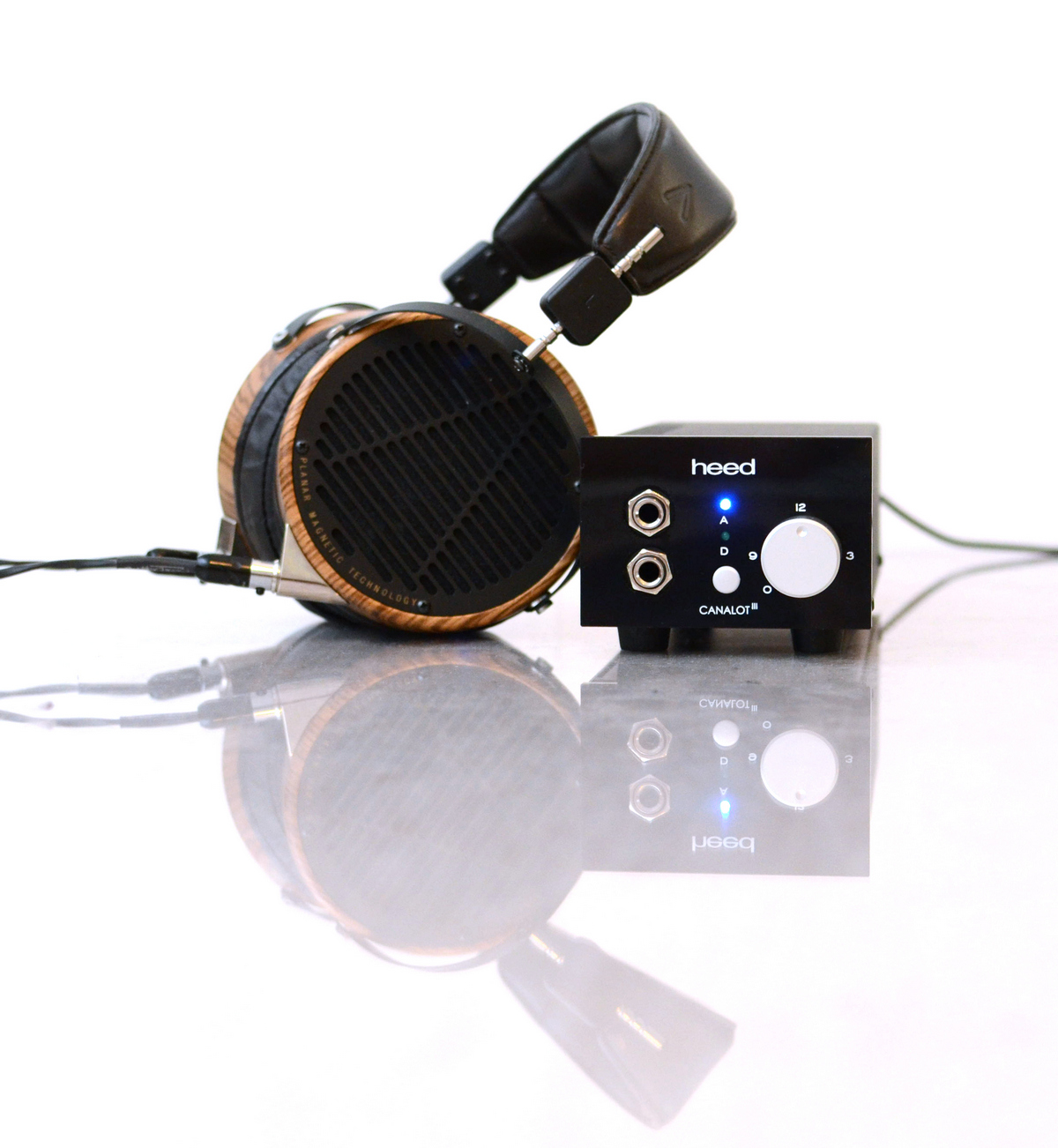
Amplifier Comparisons 2:
Heed Canalot mkIII with X-PSU
So, having tested the Canalot with a pricey PSU, how does it sound with the standard, switch mode X-PSU? It performs pretty darn good. My first listen is with the LCD-3 and Tom Waits, and the Canalot still impresses me. Comparing it swiftly to the Taurus, my initial response is that it is not that far behind at all. But it is not quite up there. The downgrade is noticeable. Altough basic sound signature and tonality remains the same as before, there is a certain loss of headspace, clarity and precision. That being said, I am really impressed with the little and now very compact amp. And if I didn’t mention it before, the LCD-3 is really great with the Canalot, regardless of the PSU connected.
vs Violectric V200
Focal Elear
Four Ravens – Ill Considered: The V200 has more space and headroom, especially the treble feels a bit more detailed. The Heed is a bit more closed in and muffled sounding in direct comparison. It is still very good, but the loss of the Obelisk PX is noticeable.
Four Seasons, Spring no.2 – Vivaldi/Janine Jansen et.al.: The Heed has a seducing tonality, slightly warmer. But the V200 has that extra fine detail, timbre, and sense of space that makes it objectively better.
Beyerdynamic T1 mkII
Four Seasons, Summer 3 – Vivaldi/Janine Jansen et.al.: Same thing here as with the Elear, the Heed is very good and has nice warm mids, but is not quite up to the level of detail presented by the V200. Considering the price difference though, I must say I am really impressed with the Heed.
Lost Cause – Beck: The male vocals are different, a bit thicker with the Heed. What is more natural is always hard to say, but the Heed sometimes feels a bit more colored, though mostly in a welcome way.
Prokoviev´s Violin Concerto No.2, G minor, op 53 – Janine Jansen et.al: The slight extra warmth the Heed offers suits the T1 very well, and even though the V200 has a bit more fine detail, the Heed is nicer overall.
Blood in the Cut – K.Flay: Again, the V200 offers a bit more space around instruments, but the Heed is really not far behind.
Acoustic Research AR-H1
Running some tracks with the AR-H1, the difference is less obvious than with the more expensive headphones I tried so far. The AR-H1 is no slouch in its price class, but has a more forgiving character than e.g the T1. Actually, I often end up preferring the Heed because of its warmer and more inviting tone, especially with string music, since I feel the detail level is more similar.
Sennheiser HD650
Another lower-priced headphone. Surely known to grow a lot with the right amp. V200 is not the absolute best match in its price range for the HD650, though – but it works well. Running through a selection of song, I find that the HD650 reveals the difference between the amps better than the AR-H1. Often I prefer the V200 for a small dose of added clarity, but I almost as often prefer the Heed for its nicer, fuller midrange.
Beyerdynamic DT1770PRO
Similar experience as with the HD650. Great with both, V200 generally offers a bit of better resolution, the Heed has that extra warmth.
Hifiman Sundara
Rocket – Smashing Pumpkins: I prefer the slightly fatter sound of the Heed. The V200 doesn’t add anything but a slight dryness.
Your Lady – Medeski, Martin and Wood: With this live recording, the V200´s extra clarity comes to its right. The Heed is a really nice partner for the Sundara, but the V200 is better.
Cassius – Fleet Foxes: The tonality and general presentation of the Heed are more pleasing, but the V200 offers more clarity.
There is no doubt that the V200 is presenting a more spacious and detailed sonic picture when the Heed Canalot is left with its least expensive PSU option. But the Canalot still has that extra charm, which not seldom makes it subjectively preferable.
vs Schiit Asgard 2
Sennheiser HD650
The Heed really plays well with the HD650. It is clear and inviting. It brings out a lot of goodness. The Schiit Asgard is a bit harder sounding, without feeling more detailed. Generally, I miss the warmth from the Heed on every track played by the Schiit.
Beyer DT1770PRO
I get similar results here. The Heed is warmer, more natural, less edgy. It is definitely a step up.
Acoustic Research AR-H1
As with the previous headphones, the Heed is more natural sounding, with a fuller and more organic sound across the range.
Focal Elear
Also with the Elear, the Heed is superior. But the difference is less pronounced than with some of the other headphones, for some reason.
Audeze LCD-X
The Search – Colluter: As with the Elear, the difference is less obvious than before. Both are doing a good job, but I am not sure the Heed necessarily is that much better here.
Young Vivaldi – RV813: Moving on to some classical, the Heed gets a bit ahead, but still – they are close.
Never Forget the Good Ones – Solveig Slettahjell: Although the voices of Slettahjell is a bit warmer with the Heed than the Schiit, I find both delicious.
I listen to a few more tracks, and must conclude, that the LCD-X, although being the most expensive headphone, to me is exposing the least differences between these two amps so far.
Sennheiser HD700
As with many of the other headphones, the Heed is superior, it sounds more natural, organic and complete.
Concluding, I do prefer the Canalot/X-PSU over the Schiit Asgard 2. The Canalot sounds more natural and organic. The difference was bigger with the higher impedance cans in the test and less pronounced with the Elear and LCD-X.
vs Beyerdynamic A20
The little Beyerdynamic is specifically built for and has proven to be a good option for high impedance phones.
Sennheiser HD800
The Heed is quite good, but I feel the A20 has the edge here. It is a bit more open and offers a bit more headroom.
Sennheiser HD700
The result is quite similar as above, the A20 is more open sounding, but otherwise similar.
Sennheiser HD650
This time, the positions are reversed. A bit to my surprise, the Heed is clearer sounding and generally better.
Beyerdynamic T1 mk2
The Heed is significantly better than the A20 also with the T1, again a bit to my surprise, since Beyerdynamic built this amp to drive their own high-impdance phones. A20 a good amp for the T1, but the Heed is clearer, tighter and with better resolution and soundstage.
Beyerdynamic DT1770PRO
Here, the preference is reversed back, the A20 is better.
Conclusion – Canalot with X-PSU
The Heed is still a solid performer with the X-PSU. It moves down some steps on the ladder in terms of detail retrieval but keeps the inviting “warmish” sound signature.
Main Conclusion
The Heed Canalot III is a very versatile headphone amplifier that delivers great sound with all the headphones I have tested. It has a warm tint and never sounds dry or clinical. The Canalot offers an inviting and quite intimate presentation with lots of detail, dynamics, and insight.
It is good value with the stock power supply, but really shines with the Obelisk PX, which puts its performance up enough price classes to justify the extra cost.
HEED CANALOT SPECIFICATIONS
Inputs: 1x analogue / 1x S/PDIF RCA / 1x USB
Outputs: 2x 6.35mm headphone / 1x line out
Frequency response (+0, -1 dB): 6 Hz – 260 kHz
Input impedance: 10 kΩ
Gain: 20 dB
Input sensitivity: 320 mV
Power: 200 mW (32 Ω) / 100 mW (120 Ω) / 20 mW (600 Ω)
SNR: > 100 dB
Upgrade card options: 1 DAC 1.3 / 1 USB 2.0
Supported sampling frequencies: 44.1 / 48 / 88.1 / 96 / 176.4 / 192 kHz
Power supply options: X-PSU 40 (standard) / Q-PSU / Obelisk PX
Max. consumption: 17 W
Weight: 1.2 kg
Dimensions (W x H x D): 9.5 x 7.5 x 25 cm
The review unit(s) were kindly lent to The Headphoneer by Moiz Audio of Norway


